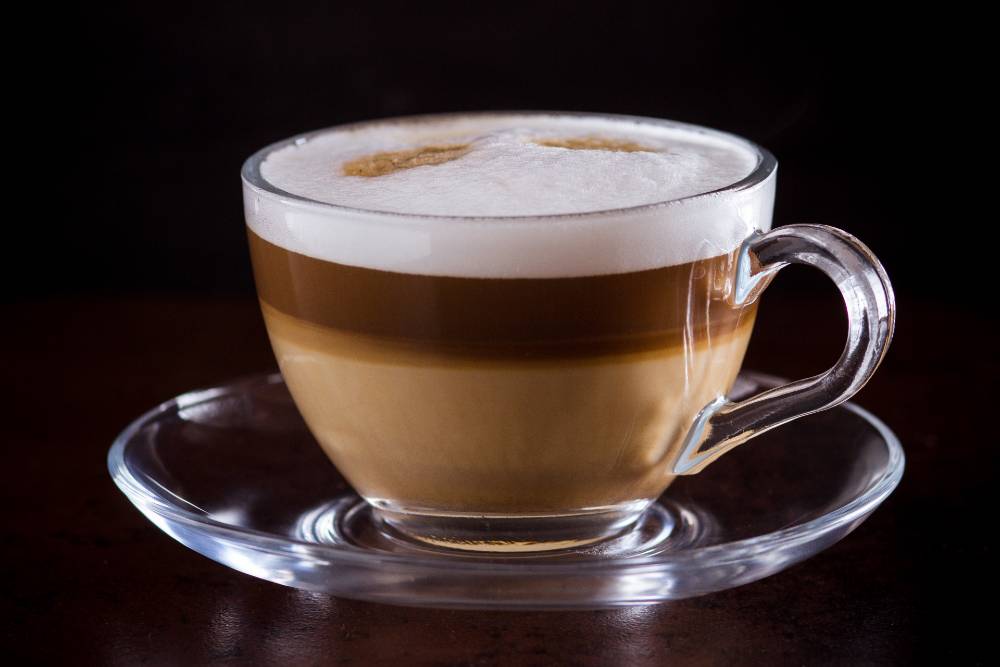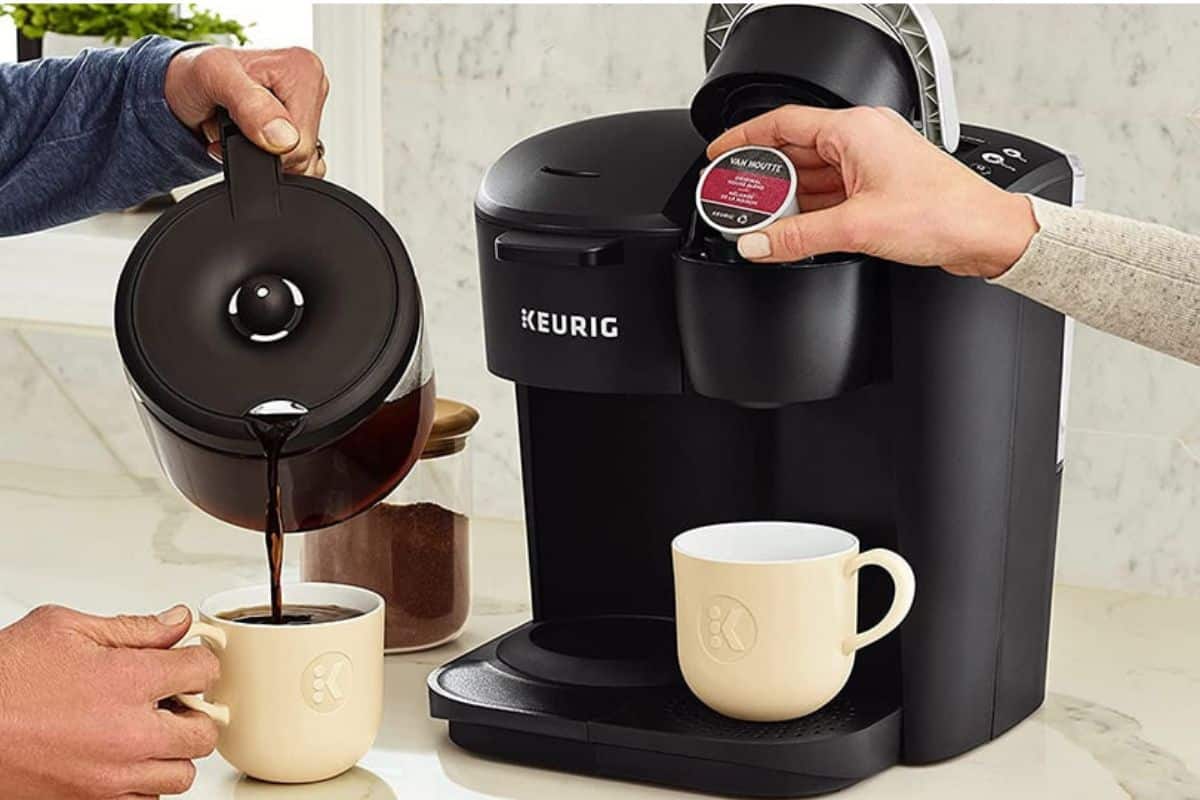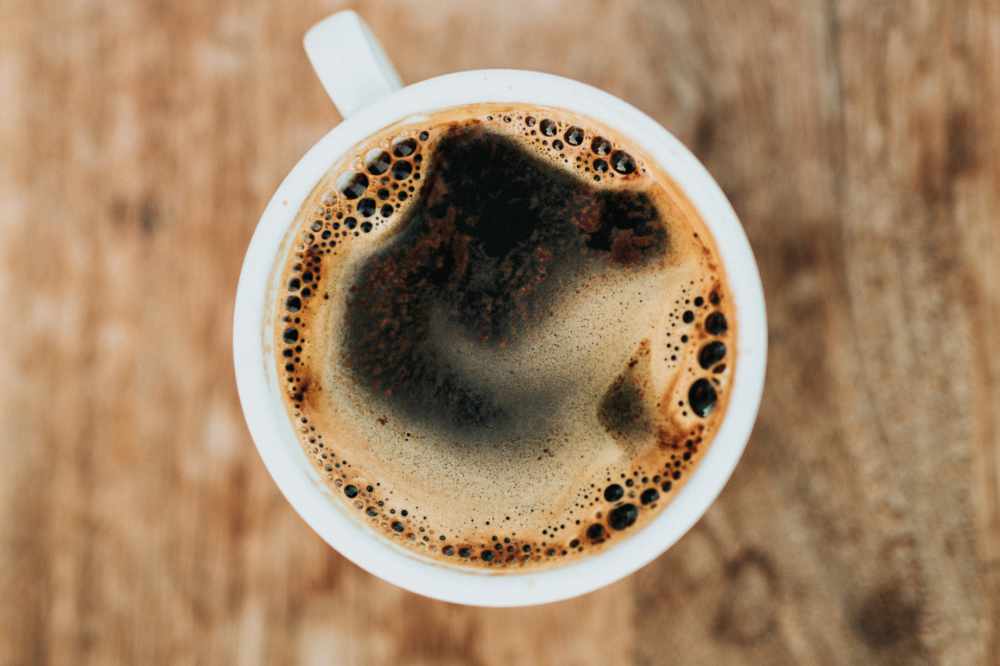Like James Bond ordering a vodka martini, shaken not stirred, did you know you can order specialty coffee tailored to your palate?
We all love a bit of wordplay when it comes to ordering drinks, it’s almost like you’re a member of a secret club or association. You feel clever, impress your friends, and you get to enjoy your drink just the way you like it!
To help you enjoy this game when it comes to the world of coffee, I’m here to show you everything you need to know about the simple cappuccino and how to order it exactly to your taste.
A bone dry cappuccino is an espresso with a large dollop of milk foam and no liquid steamed milk in it. The opposite extreme is an extra wet cappuccino that leaves out the foam and includes more milk.
You can enjoy a cappuccino anywhere in this wet to dry spectrum, as long as you know how to order it.

What is a Classic Cappuccino?
When you order a standard cappuccino from the barista the coffee drink you receive will consist of equal parts espresso, steamed milk, and milk foam. The bold taste that comes with a shot of espresso stands out well with the creamy milk froth and creates a rich drink with a thick texture. A cappuccino is a firm favorite of many coffee lovers and it’s easy to see why.
Most coffee shops only tend to offer a cappuccino in this form and you’ll not find any variations of this drink on the menu at your local Starbucks. Most people have no idea that cappuccino variants exist so here is everything you need to know to really understand this Italian classic.
What is a Wet Cappuccino?

Before we look at a dry cappuccino let’s first take it to the opposite extreme. A wet cappuccino is made up of a smaller layer of milk foam and more steamed milk. This means there’s more liquid to the drink and less aerated foam.
The extra milk gives the drink a creamy, thicker texture and you can even go a step further and order an extra wet or super wet cappuccino. This option sets the foam aside and just includes a lot of milk.
The further you push it to include less foam you end up with a coffee that more resembles a flat white.
What is a Bone Dry Cappuccino?
This type of cappuccino includes less milk and a thick layer of milk foam, hence the name ‘dry cappuccino’. Bone dry translates to literally no steamed milk and just a large dollop of microfoam. The benefits that come with enjoying your coffee brewed in this manner are as follows.
Steamed milk is around 60 degrees Celcius or 140F. An espresso machine brews coffee to be somewhere around 93C or 200F. Adding cooler milk to the hot coffee will act to cool it down. Adding less milk acts to keep the drink hot for longer, especially as the foam traps a layer of air on top, effectively helping to insulate the drink as well.
Milk foam is also a perfect way to create latte art and become the envy of all your coffee-loving friends.
How Does This Compare to a Latte?
A latte is a very similar method of brewing coffee as it starts with the espresso base but it contains way more steamed milk compared to a cappuccino. A latte typically contains somewhere between 8 to 15 ounces of milk and 1cm of foam on top. A latte is similar to an extra wet cappuccino but contains even more steamed milk.
How Does This Compare to a Macchiato?
The word macchiato, in Italy, literally means stained or spotted. This refers to espresso with a dollop of steamed milk on top so the coffee is stained with milk. A macchiato is very similar to a bone dry cappuccino but contains less foam so is a bolder tasting drink.

How to make a Bone Dry Cappuccino
The only way you can make a really good quality cappuccino is by using an espresso machine and a steam wand. There are alternative options like using a milk frother jug and Moka pot to make stovetop ‘espresso’ but for best coffee taste and texture you really need the proper equipment.
The Espresso

To make a really delicious espresso always start with whole coffee beans. Certain types of coffee are better for a rich crema so make sure you try for a medium to very dark roast. The darker the roast, the more coffee oils have been released and this helps produce that wonderful crema.
Grind your coffee beans using a burr grinder to get a cool and even grind. The more consistent the grind size the better your extraction will be.
Preheat your espresso machine and make sure the group head is also warm. It can be a good idea to flush some hot water through it, especially if this is the first use of the machine that day.
Load up the portafilter with your fresh ground coffee and tamp it in place firmly and evenly. Fix the portafilter to the group head.
Extract your espresso shot over 25-30 seconds and assess the quality of your coffee. You should have 1 ounce of coffee (25ml) for a single shot or 2 ounces if you chose a double. There should be a thick crema on top and if you separate it with a spoon it should re-form.
If the coffee flow was very quick, you end up with a thin, weak cup with not much crema. This is likely due to too coarse a grind used so set the grinder to a finer setting and try again.
If the coffee volume is small and the liquid is dark and tarry then you used too fine a grind so re-try with a slightly coarser setting.
Once you get the perfect shot of espresso it’s time to make some steamed milk.
Steamed Milk

You’ll need a stainless steel pitcher, ideally with a thermometer built-in. The volume of milk you produce is related to the size of jug you have.
Fill the jug to just over halfway or just to the lower portion of the spout. This gives the milk room to expand but also enough volume to create a whirlpool effect to incorporate more air into the liquid. Make sure you use cold milk out of the fridge and a higher fat content will give better results. If possible, use half and half.
Preheat the machine and flush the steam wand out so it’s only steam being released and any excess water is removed.
Introduce the steamer into the jug of milk and hold the jug at an angle with the tip of the steam wand submerged.
Open the steam valve and adjust your position if needed to create a swirling effect with the milk. Let the milk heat up to around 20-30C.
Gently lower the jug until the tip of the steam wand creates a ‘kissing’ sound. This is air being introduced to the milk. It takes a bit of practice but you want a rich, whirlpool movement in the milk to mix the air in as well.
Stop when the milk reaches 60C or the jug is just too hot to touch. Remember to flush out the steam wand and clean any milk residue off the wand.
Bone Dry Cappuccino
Take your espresso and spoon a large dollop of milk foam on top. If you’re very skilled you can create a beautiful latte art picture on top. I’d recommend using the extra steamed milk to make a latte or flat white for a friend or even mix some cocoa in it and enjoy a delicious hot chocolate.
Non-Dairy/Vegan Alternatives
You can use any non-dairy milk you like to create this drink but I will recommend using one that’s intended for barista use. These options include stabilizers that help the milk hold the foamy texture and you’ll struggle to create good quality microfoam without this. Soy milk, almond milk, coconut milk, and oat milk are all good options to keep this drink plant-based.
Final Thoughts
A bone dry cappuccino is a warm and foamy textured coffee that layers milk foam on top of a shot of espresso. It’s a fun thing to order and is great for showing off your latte art skills. Whether it’s wet or dry you prefer, there’s nothing standing in the way of your perfect next order.





